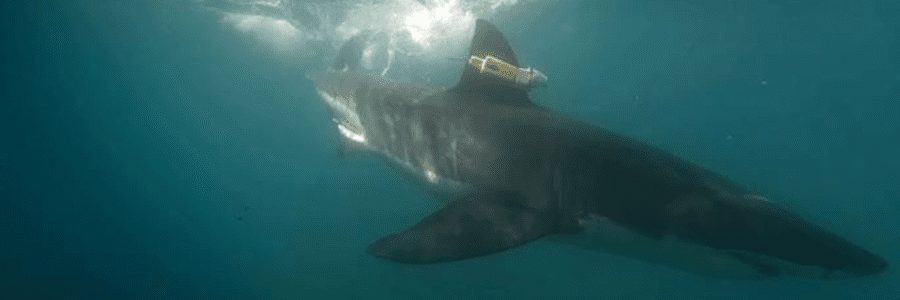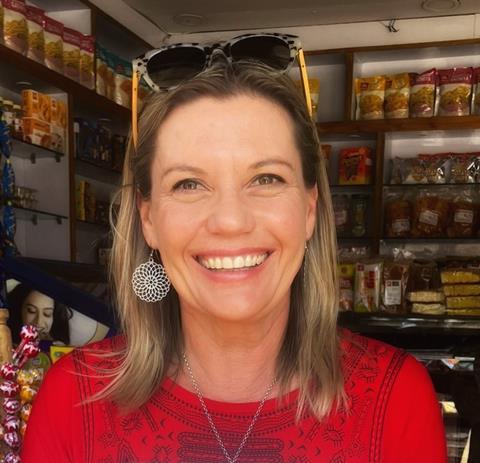BEHIND THE SCENES – Shark Eat Shark, National Geographic
Posted on: July 3rd, 2023

BROADCAST ARTICLE 30th JUNE 2023
Big Wave Productions’ director of natural history Emma Ross on proving that sharks off the coast of South Africa are eating each other
Production Company: Big Wave Productions
Commissioner: Janet Vissering, Nat Geo Wild
Length: 1 x 60 minutes
TX: 2 July 9pm ET/PT, National Geographic
Executive Producers: Emma Ross and Sarah Cunliffe
Director: Kira Ivanoff
Camera: Hansa Winshaw
Fixer: Robin Matthews
Editor: Steve Gilbert
Edit Producer: Lisa Murphy-O’Reilly
When Big Wave went into production on our National Geographic SharkFest show, we thought we had all our bases covered, but nothing could have prepared us for what was to come.

The one-hour film, in which shark researchers Enrico Gennari, Lacy William and Neil Hammerschlag investigate reports of South Africa’s white sharks eating other sharks, was to employ the latest surveillance technology to capture evidence of these attacks.
To give ourselves the best possible chance of success, we agreed to an unusually long production period; 10 months for the scientists to gather their data and then a three-week shoot with them in the field to tell their story.
Working the waters of Mossel Bay, a famous white shark hotspot on South Africa’s south coast, the first piece of equipment to be deployed was a ‘predator tag’. This bullet-sized device was fitted to 20 smoothhound sharks that the team suspected the white sharks were eating. When a smoothhound was eaten, the tag would emit a signal that revealed the location and tell-tale movements of the predator that took it.

In addition to this piece of wizardry, we had bespoke camera traps deployed day and night at key locations in the bay, where the research team thought the attacks were taking place. And, during the suspected hunting season, surveillance drones were deployed and a miniaturised camera made by CATScam was fitted to the dorsal fins of white sharks for 24 hours at a time, to try and capture a glimpse of hunting behaviour.
Two months in, all was going smoothly. Within weeks of the predator tags going on, all our smoothhounds had been eaten, and it looked like the prime culprit was a white shark. Then our camera traps captured a rare glimpse of a white shark and leopard shark in the same frame. As the white shark moved in, the leopard shark played dead, literally holding its breath so as not to be detected – evidence that these sharks also thought they might be on the menu.
But on the 16 May 2022, we received a message that would change the direction of the production.
“Orca in Mossel Bay!”
A pod of five killer whales had been sighted offshore including a notorious white shark killer called Starboard. Over the next 24 hours, the pod worked together to chase down and kill two white sharks. For the first time in South Africa, the details of their attack were captured on camera by a local drone operator and helicopter pilot, footage that we were ultimately able to licence.
It was a dark day for our sharks but also for the investigation and the film. With the orca’s arrival, the white sharks fled from the bay and we had no idea when – or even if – they’d return.
My Tricks of the Trade – Emma Ross
- Use local where possible, it will allow you to be more nimble
- Find a great fixer who is well connected
- Don’t get stuck on your original plan, flex with the story you’re presented
- React to the unfolding events, it will be better than anything you could script
- Hold your nerve
- Include a decent archive budget
For the next five months, we were grounded as we waited daily for news of a white shark sighting. By September, we made the difficult decision to split our shoot in two. Leaning heavily on our research team’s ten years of data, and pivoting our story to include the orca attacks, our South African crew recorded the back story first and reserved the rest of our shoot days for when the sharks would hopefully return.

With the deadline for National Geographic’s Shark Fest transmission rapidly approaching, it was a tense period. Half of the film was already shot but with no white sharks, there was little prospect of finishing it and we could sense our execs were starting to get nervous.
Were it not for the nimbleness of a local director and crew, and the connections of a fantastic fixer, I’m not sure we would have pulled it off. A year into the production and a nail-biting four weeks into the edit, everything suddenly aligned; the white sharks were finally spotted in Mossel Bay, and we were back in action. On the first day of the second shoot, the team had five white sharks circling the boat and attached a camera and to the back of a six-foot female. The baited camera traps went back in the water and we were able to retrieve nine months of predator tag data. The relief and excitement of the team was palpable on screen.
The finished film, which includes the orca threat from the start, is more exciting than the story we had originally pitched. It’s testament to holding your nerve, working with local teams, and being clever with your budget to include archive to tell the unexpected.
Capturing sharks
Kira Ivanoff, director

Filming white sharks in action is one of the most technically challenging subjects for any wildlife filmmaker; the sharks spend most of theirtime deep underwater – out of bounds for much of the go-to camera equipment. To help our team prove their theory that Mossel Bay’s white sharks were predating on other sharks, we needed to think outside the box and take a deep dive into new technology.
Aerial filming expert and shark scientist, Lacey Williams had been using the DJI Mavic 2 drone to follow white sharks with amazing results. Here, she used her drone skills to give shark scientist Enrico Gennari a birds-eye view of their movement in Mossel Bay. This technique, together with Enrico’s tracking data, revealed the sharks were spending a lot of time around the bay’s three rivers, providing our first clue to what was going on.
Next, we wanted to get underwater with the white sharks. It’s too dangerous to dive, so we had to rely on another remote camera solution. For this we used a bespoke ‘fincam’, made by CATS Cam, that contained a tracking device and data logger. It confirmed the sharks were spending a lot of time near the seabed, exactly where we suspected the smaller sharks were hanging out.
To find out what they were doing there, the team deployed ‘BRUVs’ – baited remote underwater video systems. Basically a GoPro HERO11 mounted to a metal cage that’s attached to a small baited drum and lit with dive lights. The BRUVs were specifically built to withstand not the fearsome jaws of a great white, but the nimble tentacles of an octopus. Early footage shows how octopus would try to dismantle the cage to get to the shiny camera inside! While the BRUVs served up some entertaining moments, the most critical clip to the investigation was a pyjama shark playing dead as a great white moved in – proof that small sharks see their iconic cousins as predators.
By filming from the air, the seabed, and even the shark’s back, we were able to build a more accurate snapshot of white sharks’ lives – one that, as the film will reveal, could literally save them from extinction.


